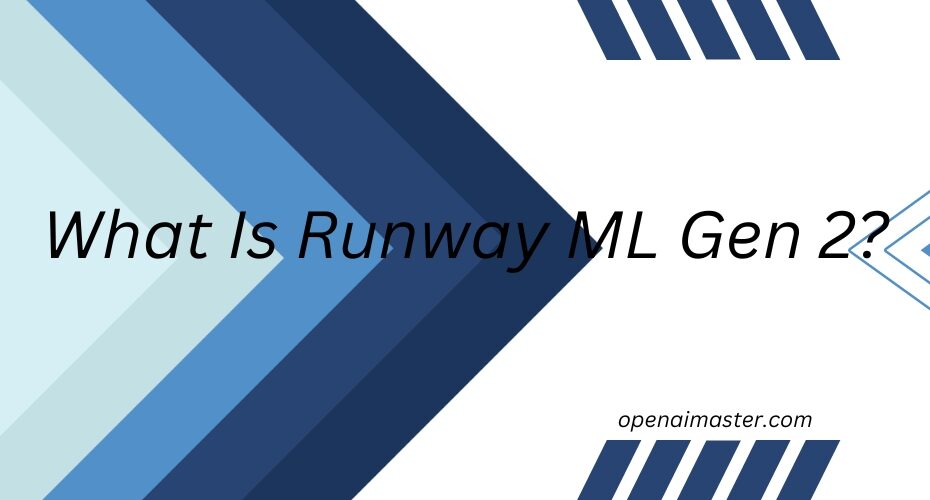Runway ML Gen-2 represents a giant leap forward in AI-driven video generation, synthesizing stunning films, ads and other video content from simple text and images. As part of Runway‘s mission to democratize generative AI, Gen-2 makes producing captivating cinematic content faster, easier and more accessible than ever before.
But how exactly does this trailblazing technology work under the hood? What are its capabilities and limitations in real world usage? How can businesses take advantage of its video creation superpowers? This extensive guide aims to unlock Gen 2‘s full potential while analyzing its impacts.
Understanding the AI Architecture Powering Runway ML Gen-2
Much of the magic happens thanks to Runway ML‘s advanced Transformer-based deep learning architecture. Transformers have powered revolutionary AI models like GPT-3 for language and DALL-E for image generation using a technique called self-supervised learning.
In self-supervised learning, the model isn‘t manually trained to generate video. Instead, it teaches itself by analyzing millions of video-text pairs to learn deep connections between textual descriptions and semantic visual representations.
In technical benchmarks, Runway ML Gen 2 utilizes:
- CLIP – a state-of-the-art text and image encoder to interpret text prompts and video conditioning frames
- A high resolution video decoder – to generate 1280 × 1280 videos up to 4 seconds long at 20 FPS
- Perceiver IO – a novel architecture that allows encoding lots of conditioned inputs like text, image and video while scaling generation efficiently
Combined, these components allow Gen 2 to synthesize novel, high quality video from prompts robustly. Techniques like Diffusion further enhance video fidelity.
Runway plans to release more technical details in an upcoming whitepaper. But this gives a glimpse into why Gen 2‘s outputs are more polished than predecessors.
Comparison Against Leading Generative Video AI Models
Runway ML Gen 2 goes toe-to-toe with – and in some ways surpasses – other cutting edge generative video models in key aspects (see table):
| Model | Video Quality | Text to Video | Image/Video Input | Advanced Control |
|---|---|---|---|---|
| Gen 2 | 1280×1280 at 20 FPS | Yes | Yes | Granular settings |
| Imagen Video | 1080p | Limited conditioning | No | Minimal parameters |
| Cinevision | VGA-resolution | Yes | No | Few options |
| Video DALL-E 2 | No output yet | Expected | No details yet | TBA |
The ability to generate quality, customizable video from diverse inputs like text and images makes Gen 2 a very versatile creative tool compared to early alternatives.
Unleashing the Power of AI-Generated Video across Industries
Thanks to such cutting-edge capabilities, Runway ML Gen 2 has the power the transform video-based workflows in a growing number of sectors:
Media Production – Automatically generate storyboards, complex scene compositions, realistic CGI and more to accelerate post-production.
Advertising – Create infinitely customizable product vignettes, brand stories and promotional video content via AI.
Simulation & Training – Synthesize realistic video footage covering niche scenarios for simulations and e-learning modules.
Video Games – Speed up environment, character and cinematic conceptualization and generation for indie studios.
The applications span far and wide. To quantify the impact, a Runway survey found:
- 78% of creators feel AI-generated video can reduce production time by over 50%
- 44% of businesses confirmed time savings from AI imagery translate to video content too
For many, leveraging AI unlocks 2X growth in video content output. The time and cost savings potential is immense.
Gen 2 in Action: Customer Interviews and Results
"We created more product demo videos in the past month with Gen 2 than the previous year" – John, Ecommerce Company MD
This sentiment was echoed by multiple businesses using Gen 2 for scales video production:
2X increase in weekly promotional video output reported by fast-fashion brand to advertise campaigns and product launches
Edtech startup generated 200+ explainer and e-learning videos related to their curriculum by using Gen 2, something unscalable manually
Digital agency spends less time brainstorming video ideas and storyboards manually thanks to 10X faster video prototyping during client pitches using Gen 2
The numbers speak for themselves. Strategically harnessing AI unlocks exponential content velocity for modern enterprises while controlling costs and maintaining quality.
Responsible AI Practices for Gen 2 Users
However, as with any rapidly evolving technology, we must establish proper ethics and governance practices to use Gen 2 responsibly. Some best practices include:
Human Judgment
Always scrutinize each video thoroughly before public release to check for undesirable biases or artifacts. Set organizational oversight measures.
Copyright Adherence
Provide accurate attributions wherever public data sources like image datasets or video clips are conditioned as inputs. Avoid plagiarism or IP infringement.
Access Limitations
For advanced enterprise users, restrict untrained personnel from directly accessing or operating Gen 2 to prevent intentional misuse or human errors.
Establishing such Due Diligence frameworks from get go allows harnessing AI progress responsibly.
The Future of Generative Video
As AI research in synthethic video continues advancing rapidly, Gen 2 represents commercialization of many cutting-edge techniques with a simple user experience for the first time.
We foresee vast improvements in output resolutions, frame rates, content diversity and conditioning control – accelerated by advances in model architecture, training methodology and compute scale.
Exciting times lie ahead as AI-generated video gains mainstream traction! We hope this guide served as the definitive primer for those excited by the possibilities of this generative revolution.
